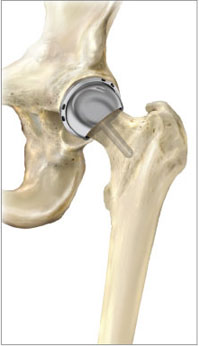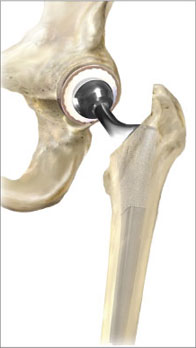BIRMINGHAM HIP* Resurfacing
![]()
Who is a Candidate
for Hip Resurfacing?
![]()
Diseases of the Hip
![]()
Non-surgical Alternatives
to Hip Resurfacing
![]()
The Procedure
![]()
The Implant
![]()
Hip Resurfacing:
Pre-op & Surgery Day
![]()
Hip Rehabilitation After Surgery
![]()
Preventing Hip Resurfacing
Complications
![]()
Frequently Asked Questions
![]()
The Procedure
Until just recently, your orthopedist would likely be recommending total hip replacement surgery at this point of your disease state. While it is clearly a more bone-sacrificing procedure than hip resurfacing, total hip replacement is a safe and effective surgery, and is performed more than 300,000 times per year in the United States.
| Hip before surgery | Implant components |
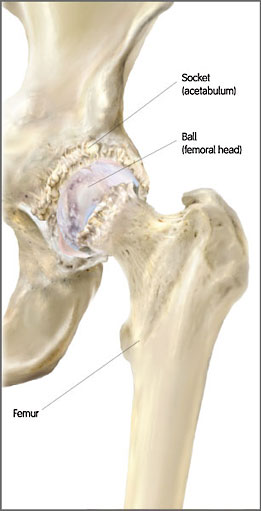 |
As you may know, total hip replacement requires the removal of the femoral head and the insertion of a hip stem down the shaft of the femur. Hip resurfacing, on the other hand, preserves the femoral head and the femoral neck. During the procedure, your surgeon will only remove a few centimeters of bone around the femoral head, shaping it to fit tightly inside the BIRMINGHAM HIP Resurfacing implant. |
Your surgeon will also prepare the acetabulum for the metal cup that will form the socket portion of the ball-and-socket joint. While the resurfacing component slides over the top of the femoral head like a tooth cap, the acetabular component is pressed into place much like a total hip replacement component would be.
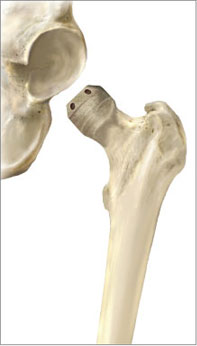 |
BIRMINGHAM Hip Resurfacing System |
|
| Cuts | Implanted | |
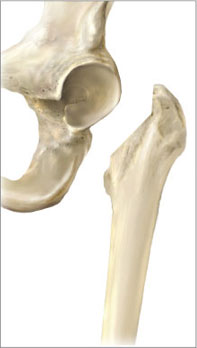 |
Total Hip Replacement |
|

